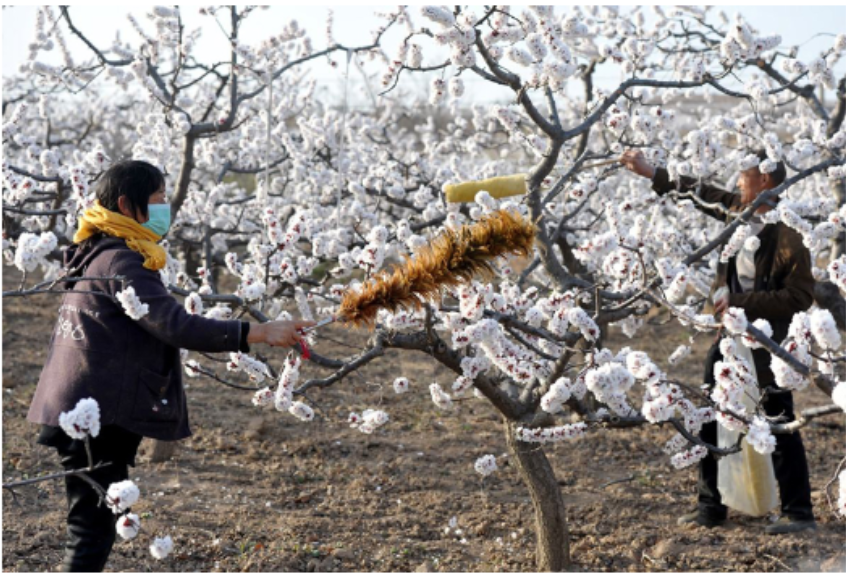Aug . 22, 2025 17:13 Buyela ohlwini
Tree Pollen Indoor Contamination
Indoor contamination from tree pollen, grass pollen, and ambrosia pollen has become a significant health concern affecting millions of people worldwide. These microscopic particles infiltrate our living spaces through multiple pathways, triggering allergic reactions and compromising indoor air quality. The problem intensifies during peak pollination seasons when concentrations reach their highest levels. Understanding the sources, behaviors, and mitigation strategies for these pollen types is essential for creating healthier indoor environments, particularly for allergy sufferers and vulnerable populations.
Sources of Ambrosia Pollen Indoors
The pervasive ambrosia pollen, primarily from ragweed plants, infiltrates homes through various unsuspected routes:
• Open windows and doors during peak ragweed season (typically August through November)
• Ventilation systems lacking HEPA filtration allow ambrosia pollen circulation
• Clothing, shoes, and pet fur act as efficient carriers of outdoor particles
• Attached garages serve as collection points that gradually release pollen
• Older homes with poor insulation and air sealing permit greater infiltration
• Indoor plants may harbor settled pollen that becomes airborne during cleaning

Grass Pollen Infiltration Patterns
Grass pollen exhibits unique seasonal behaviors that affect indoor environments:
• Peak contamination occurs during late spring and early summer months
• Higher humidity levels increase grass pollen adherence to fabrics and surfaces
• Carpeted areas accumulate significantly more particles than hard flooring
• Ceiling fans and forced air systems redistribute settled pollen continuously
• Nighttime temperature drops create air currents that draw pollen indoors
• Urban environments often show higher indoor concentrations due to limited green space
Tree Pollen Seasonal Dynamics
Tree pollen follows distinct annual patterns that influence indoor air quality:
• Early spring brings the heaviest tree pollen concentrations (February-April)
• Particle sizes vary dramatically by species, affecting penetration depth
• Oak, birch, maple, and elm pollens are most problematic for indoor spaces
• Rainfall creates a temporary reduction followed by increased indoor levels
• Standard window screens capture only about 30% of incoming particles
• Multi-story buildings demonstrate vertical concentration differences
• Morning hours typically show the highest infiltration rates
Mitigation strategies for pollen control
Effective approaches to reduce indoor pollen contamination include:
• Installing MERV 13 or higher filters in HVAC systems
• Creating positive air pressure indoors to limit infiltration
• Using portable HEPA air purifiers in high-traffic areas
• Implementing a "no shoes" policy during pollen season
• Scheduling professional deep cleaning before peak seasons
• Sealing cracks around windows, doors, and utility penetrations
• Timing ventilation for low-pollen periods (typically after rainfall)
Health impacts of indoor pollen exposure
Prolonged exposure to indoor pollen causes various health effects:
• Allergic rhinitis symptoms (sneezing, congestion, itchy eyes)
• Exacerbation of asthma and respiratory conditions
• Sleep disturbances from nighttime allergy symptoms
• Reduced productivity and cognitive function
• Increased susceptibility to secondary infections
• Chronic inflammation in sensitive individuals
• Development of new allergic sensitivities over time
Tree Pollen FAQs
Q: How do allergy symptoms differ between ambrosia pollen, grass pollen, and tree pollen?
A: While all three can trigger allergic rhinitis (sneezing, runny nose, itchy eyes), there are subtle differences. Tree pollen allergies often cause early spring symptoms with more severe eye irritation. Grass pollen (peak late spring/early summer) may lead to intense nasal congestion and throat itchiness. Ambrosia pollen (ragweed, peak fall) is linked to the most severe symptoms, including prolonged sneezing, fatigue, and even asthma flare-ups due to its high allergenic potency.
Q: When are tree pollen, grass pollen, and ambrosia pollen most prevalent during the year?
A: Their seasons vary by climate but follow a general pattern. Tree pollen peaks earliest, typically from late winter to spring (February–May in temperate regions), with species like oak and birch leading. Grass pollen dominates late spring to early summer (May–July). Ambrosia pollen (ragweed) thrives in warm, dry fall weather (August–October), often persisting until the first frost. Regional variations exist—warmer areas may see extended seasons.
Q: Can exposure to one type of pollen (e.g., grass pollen) worsen reactions to tree pollen or ambrosia pollen?
A: Yes, due to cross-reactivity or heightened immune sensitivity. If you’re allergic to grass pollen, your immune system may overreact to similar proteins in other pollens, intensifying reactions to tree pollen (e.g., Bermuda grass and oak) or ambrosia pollen. This "priming effect" can make seasonal allergies feel more severe when multiple pollen types overlap, such as late spring when grass and tree pollen seasons overlap.
Q: What are the best ways to reduce exposure to tree pollen, grass pollen, and ambrosia pollen indoors?
A: For tree pollen (spring), keep windows closed during peak bloom and use HEPA air purifiers. Vacuum frequently with HEPA filters to trap grains. For grass pollen (summer), remove shoes indoors to avoid tracking it in, and shower after outdoor activities. For ambrosia pollen (fall), use dehumidifiers to reduce indoor moisture (pollen thrives in dry air) and wash bedding weekly in hot water. All three benefit from regular dusting with a damp cloth to prevent pollen redistribution.
Q: How do treatment options vary for allergies to ambrosia pollen, grass pollen, and tree pollen?
A: Antihistamines and nasal sprays work for mild symptoms across all three, but severity may influence choices. Tree pollen allergies often respond well to early-season preventive meds (e.g., intranasal corticosteroids) started before blooms. Grass pollen allergies may require longer-acting antihistamines due to extended exposure. Ambrosia pollen allergies, being more severe, often need a combination of meds, and immunotherapy (allergy shots) is highly recommended for long-term relief, as it targets the root immune response.
-
Tree Pollen Indoor Contamination
IzindabaAug.22,2025
-
kiwipollen-viability-assessment
IzindabaAug.22,2025
-
Cherry Pollen Germination Rates
IzindabaAug.22,2025
-
Buy Apple Pollen Online Guide
IzindabaAug.22,2025
-
Pear Pollen Harvesting Techniques
IzindabaAug.22,2025
-
Understanding Pollen Seasonal Patterns
IzindabaAug.22,2025